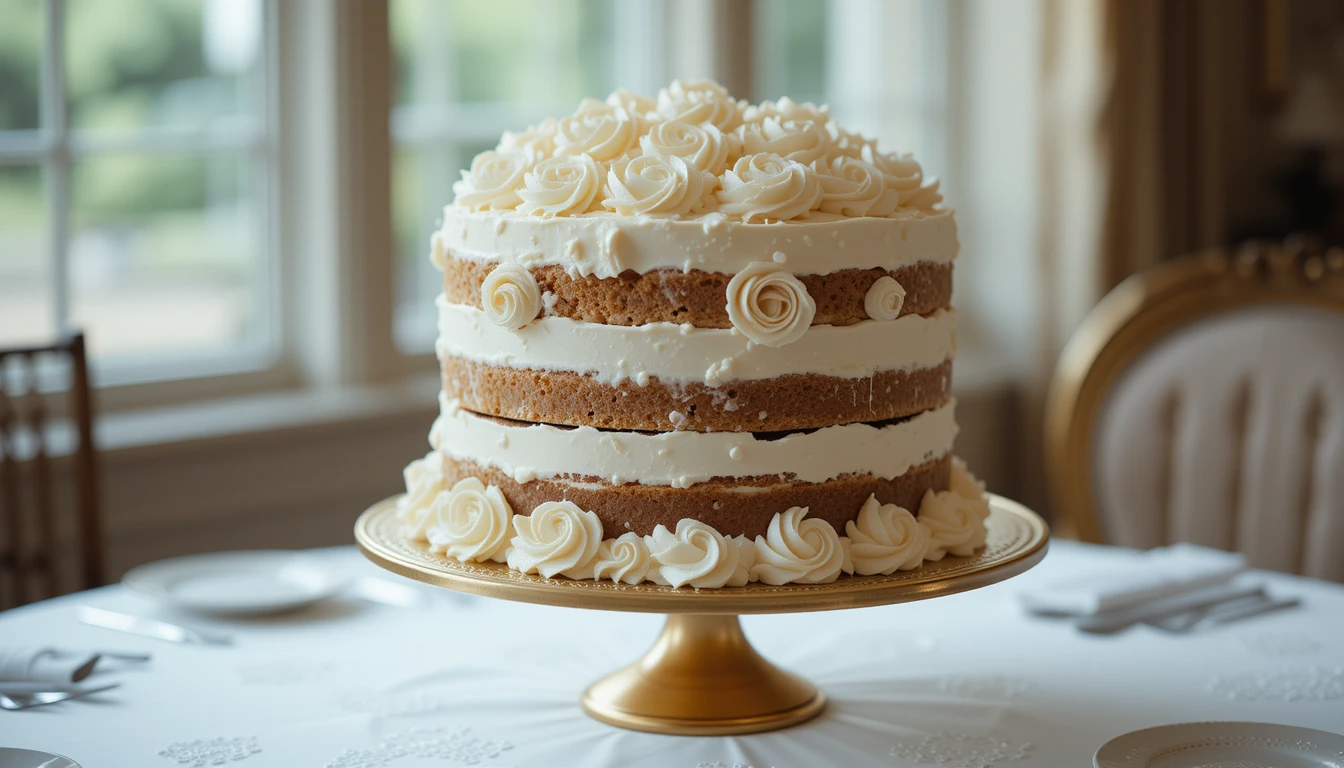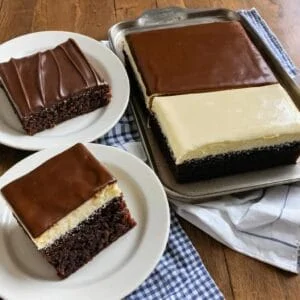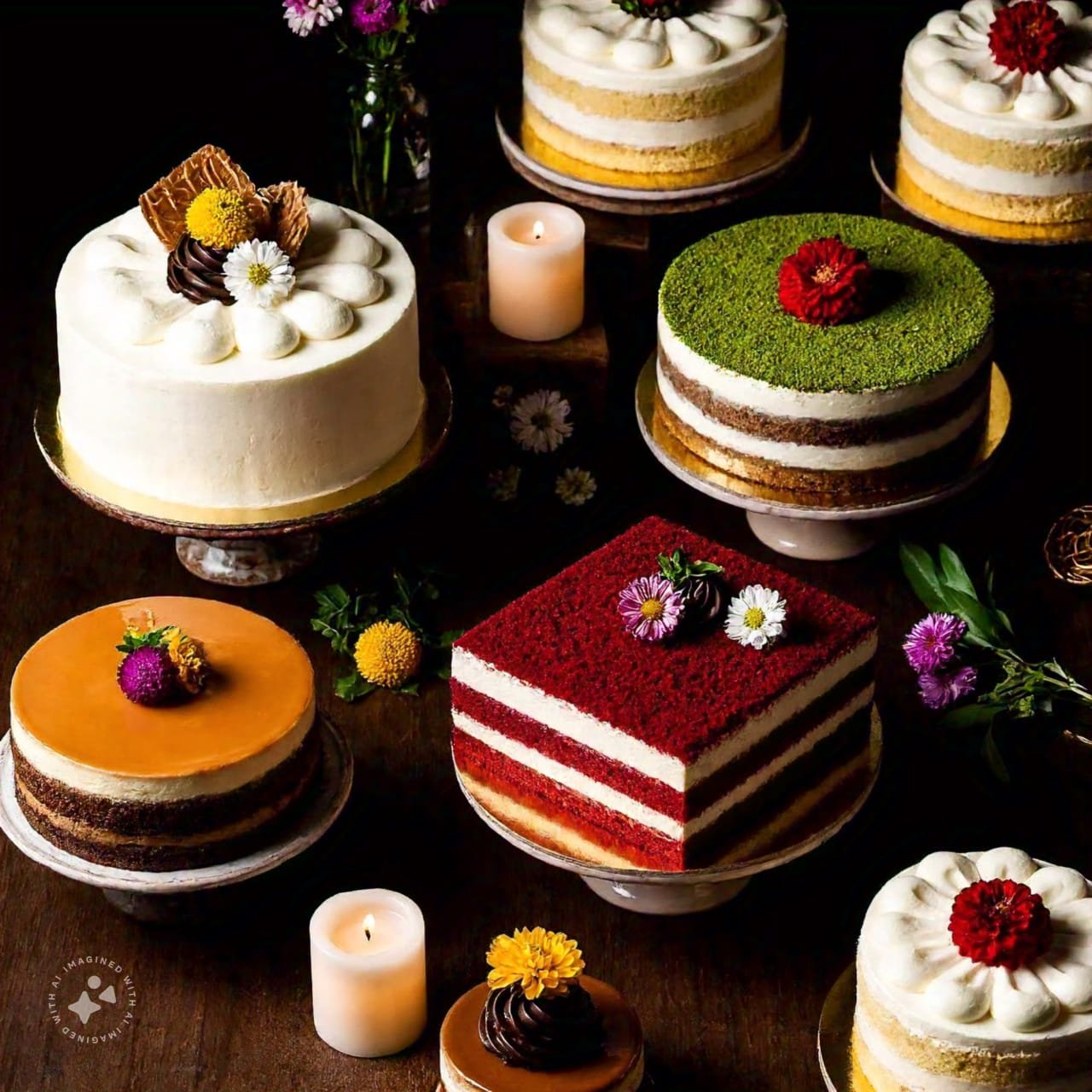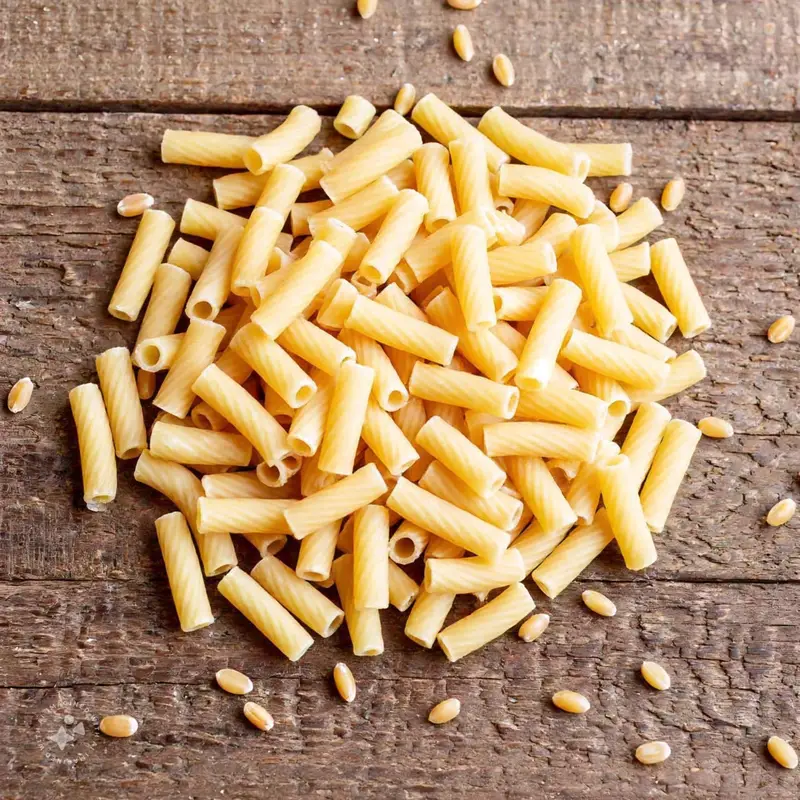Cakes are a beloved dessert, celebrated worldwide for their versatility and delicious flavors. Whether you’re planning a birthday party, wedding, or casual gathering, selecting the right cake type can make all the difference. Among the numerous cake varieties, sheet cakes and regular cakes stand out as two popular options, each offering unique features and benefits.
Understanding the difference between a sheet cake and a regular cake involves exploring their sizes, designs, preparation methods, and uses. In this article, we’ll dive deep into these two cake types, compare their characteristics, and help you choose the perfect cake for any occasion.
Table of Contents
What is a Sheet Cake?
Definition, Size, and Typical Features
A sheet cake is a type of cake baked in a flat, rectangular pan, often referred to as a “sheet pan.” Its defining feature is its large, flat surface, which makes it an excellent canvas for elaborate designs or simple frosting.
Sheet cakes come in various sizes, generally categorized as full, half, or quarter sheet cakes:
- Full Sheet Cake: Measures approximately 18 x 24 inches, ideal for large events.
- Half Sheet Cake: Around 12 x 18 inches, commonly used for mid-sized gatherings.
- Quarter Sheet Cake: About 9 x 12 inches, perfect for smaller parties or casual get-togethers.
These cakes are single-layered, making them easy to bake, decorate, and serve. They are usually presented directly in the pan, adding to their convenience.
Popular Occasions for Sheet Cakes

Sheet cakes are a go-to choice for occasions requiring large servings without sacrificing quality or appeal. Some popular events include:
- Birthday Parties: Especially for children, thanks to customizable themes and designs.
- Corporate Events: Where simplicity and large portions are key.
- Graduations and Farewells: Easy to personalize with messages or photos.
- School or Church Gatherings: Cost-effective and capable of serving many people.
Their practicality makes them a staple for informal or semi-formal events.
Pros and Cons of Sheet Cakes
Pros:
- Ease of Preparation: Single-layer baking means less hassle.
- Large Servings: Ideal for feeding big groups efficiently.
- Customizable Designs: Perfect for themed parties or personalized messages.
- Affordable: Often more cost-effective than other cake types.
Cons:
- Limited Layers: May not offer the rich, layered experience of regular cakes.
- Basic Aesthetic: While customizable, the flat design is less dramatic than tiered cakes.
- Transportation Challenges: Larger sheet cakes can be tricky to move without damage.
For an iconic example of a sheet cake, check out the Texas Sheet Cake—a rich and chocolatey option loved by many. Learn more about it here.
What is a Regular Cake?
Definition, Styles, and Shapes
A regular cake refers to a traditional, often multi-layered cake, baked in various pan shapes, including round, square, or even novelty molds. Unlike sheet cakes, regular cakes emphasize height, layers, and intricate decoration.
These cakes can be as simple as a two-layered sponge with frosting or as elaborate as a multi-tiered wedding cake with fondant and edible embellishments. Common sizes range from 6 to 12 inches in diameter for round cakes and comparable dimensions for other shapes.
Typical Occasions for Regular Cakes
Regular cakes are synonymous with celebrations and are often the centerpiece of formal events:

- Weddings: A multi-tiered regular cake is a traditional wedding centerpiece.
- Anniversaries: Regular cakes add elegance to significant milestones.
- Elegant Dinners or Receptions: Where the cake’s presentation is as important as its taste.
- Personalized Celebrations: Smaller regular cakes are often chosen for intimate gatherings.
These cakes are as much about appearance as they are about flavor, making them a versatile choice for diverse settings.
Pros and Cons of Regular Cakes
Pros:
- Aesthetic Appeal: Offers a striking visual impact, especially when tiered.
- Layered Texture: Multiple layers provide a combination of flavors and textures.
- Wide Variety: Comes in endless shapes, sizes, and designs.
- Formal Presentation: Suited for upscale events.
Cons:
- Higher Cost: Ingredients, preparation, and decoration can be more expensive.
- Complexity: Requires more skill and time to bake and assemble.
- Portioning Challenges: Cutting and serving can be more complicated than sheet cakes.
Key Differences Between Sheet Cakes and Regular Cakes
Differences in Size and Shape
One of the most obvious distinctions between a sheet cake and a regular cake is their size and shape.

- Sheet Cakes: Typically rectangular and flat, sheet cakes are designed to cover a large surface area. They are ideal for events requiring many servings, as their uniform shape allows for easy slicing into even portions. Their standard dimensions make them predictable in size, helping hosts plan for large groups.
- Regular Cakes: These cakes are often round or square, and their size varies depending on the number of layers or tiers. They are more compact but taller, creating a visually impressive presentation. Regular cakes tend to serve fewer people unless they are multi-tiered, which increases complexity and cost.
Frosting and Decoration Variations
The type of decoration is another key difference between the two cake types.
- Sheet Cakes: Because they are flat, sheet cakes provide a large, smooth canvas that is perfect for simple designs, text, or edible images. However, they generally lack the intricate three-dimensional decorations possible with regular cakes.
- Regular Cakes: These cakes are often elaborately decorated, with fondant, piped designs, and edible ornaments. The layered structure allows for creative vertical elements like flowers, toppers, or cascading decorations.
Sheet cakes are more practical, while regular cakes emphasize artistry.
Portability and Convenience
Sheet cakes shine when it comes to portability and convenience.
- Sheet Cakes: Most are served directly in the baking pan, making them easy to transport. They are also straightforward to slice and serve, making them a popular choice for events like potlucks or large parties.
- Regular Cakes: Transporting regular cakes, especially tiered ones, can be a delicate process. They require sturdy boxes and careful handling to avoid damage. Additionally, serving a regular cake often requires more time and effort due to its layered construction.
Price Differences
The cost of a cake is an important consideration, and it varies significantly between sheet cakes and regular cakes.
- Sheet Cakes: Typically more affordable, sheet cakes are economical because they require less labor, fewer ingredients, and simpler decoration. This makes them an excellent choice for budget-conscious hosts.
- Regular Cakes: With their layered design and intricate decorations, regular cakes are often more expensive. The price increases with the complexity of the design and the number of layers or tiers.
Choosing Between a Sheet Cake and a Regular Cake
Factors to Consider: Occasion, Budget, and Serving Size
When deciding between a sheet cake and a regular cake, consider the nature of your event, your budget, and how many guests you need to serve.
- Occasion: A casual gathering like a birthday party or school event might call for a sheet cake, while a formal celebration such as a wedding is better suited for a regular cake.
- Budget: If cost is a concern, sheet cakes are the more economical choice.
- Serving Size: For larger crowds, sheet cakes are practical and efficient, while regular cakes work well for smaller, more intimate gatherings.
Best Use Cases for Sheet Cakes
Sheet cakes are perfect for:
- Large, informal events like office parties or fundraisers.
- Situations where ease of serving and cost-efficiency are top priorities.
- Customizable designs with a focus on simplicity.
When to Opt for a Regular Cake
Regular cakes are ideal for:
- Formal occasions like weddings, anniversaries, or high-profile events.
- Settings where presentation and aesthetic appeal are paramount.
- Smaller gatherings where intricate designs can be appreciated.
Frequently Asked Questions (FAQs)
What are the dimensions of a sheet cake?
Sheet cake dimensions depend on the size category:
- Full Sheet Cake: Approximately 18 x 24 inches.
- Half Sheet Cake: Around 12 x 18 inches.
- Quarter Sheet Cake: About 9 x 12 inches.
These standard sizes can vary slightly by bakery or pan manufacturer, so it’s always a good idea to confirm exact dimensions if you need specific measurements.
Are sheet cakes cheaper than regular cakes?
Yes, sheet cakes are generally cheaper than regular cakes. Their single-layer structure requires fewer ingredients, less labor for decoration, and minimal assembly, making them an economical option. Regular cakes, especially tiered ones, can be significantly more expensive due to the added complexity and decorative details.
Can a regular cake be turned into a sheet cake?
Technically, yes, but it depends on the recipe and the pan used. To convert a regular cake recipe into a sheet cake:
- Adjust the batter quantity to fit the larger pan size.
- Reduce the baking time, as sheet cakes have a thinner layer and cook faster.
- Simplify decorations to match the flat surface of a sheet cake.
However, converting the other way—making a regular layered cake from a sheet cake recipe—is more challenging due to the texture and consistency differences.
Which is better for weddings: sheet cake or regular cake?
For weddings, regular cakes are typically preferred due to their aesthetic appeal and tiered design, which can serve as a centerpiece. However, sheet cakes can serve as an affordable and practical backup option, often used in the kitchen to ensure there’s enough cake for everyone.
How long do sheet cakes and regular cakes last?
Both types of cakes last about the same amount of time:
- Unfrosted Cakes: Can be stored for 2-3 days at room temperature or up to a week in the fridge.
- Frosted Cakes: Typically last 3-4 days in the fridge due to the protective layer of frosting.
Freezing is an option for both types, extending their shelf life up to 2-3 months. Always store cakes in an airtight container to maintain freshness.
How many people can a sheet cake or regular cake serve?
The number of servings depends on the cake’s size:
- Sheet Cakes: A full sheet cake can serve 96 people, a half sheet cake about 48, and a quarter sheet cake roughly 24.
- Regular Cakes: Servings vary by size and number of layers. For example, a standard 8-inch round two-layer cake serves about 16 people, while a three-tiered wedding cake can serve over 100.
Sheet cakes are more predictable for large gatherings, while regular cakes cater to smaller, more intimate events.
Conclusion
Choosing between a sheet cake and a regular cake depends largely on the type of event, your budget, and how you prioritize presentation versus practicality.
- Sheet cakes are the champions of convenience, offering an affordable, easily portioned solution for large gatherings. Their simple, flat design makes them versatile and perfect for casual events.
- Regular cakes, on the other hand, excel in elegance and visual appeal. With their layered structure and intricate decorations, they make a statement at formal celebrations and smaller, more intimate occasions.
Understanding the key differences between these two popular cake styles will ensure that your dessert not only satisfies your guests but also complements the spirit of your event. Whether you choose the practicality of a sheet cake or the sophistication of a regular cake, both have their own charm and place in the world of celebrations.
For more creative cake ideas and dessert inspiration, visit Homely Tasty to explore a variety of recipes and tips.





